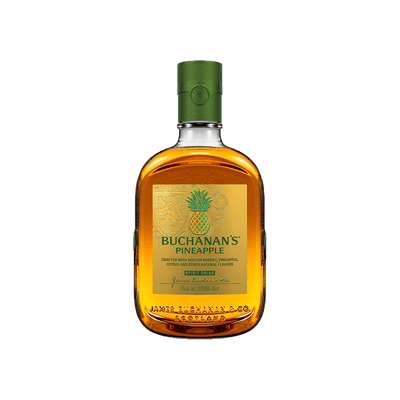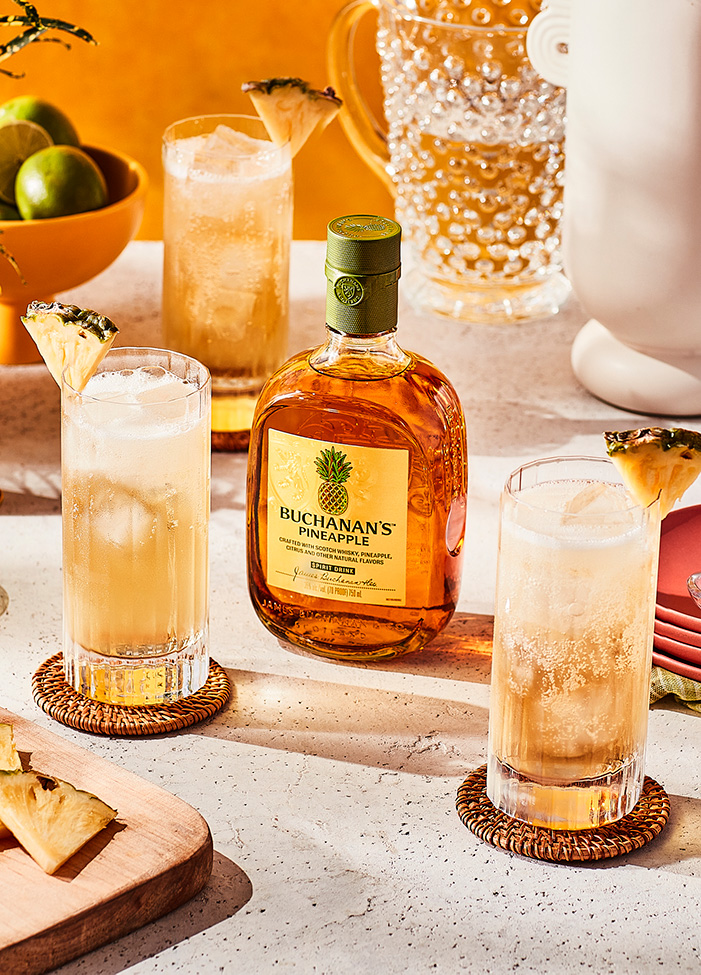Pineapple Liqueur
What is Pineapple Liqueur?
Pineapple liqueur is a sweet, tropical spirit that belongs to the broader category of Fruit Liqueurs, made by infusing or distilling fresh pineapple with a neutral base spirit and adding sugar to create a smooth, dessert-like consistency. What defines pineapple liqueur is its bright, sunny flavor profile that captures the essence of ripe pineapple - balancing the fruit's natural sweetness with its characteristic tangy acidity and subtle tropical notes. These liqueurs typically range from 15-30% alcohol by volume and showcase varying degrees of intensity, from subtle pineapple hints to bold, juice-forward expressions that taste like liquid vacation.
Learn More About Pineapple Liqueur
What makes Pineapple Liqueur unique?
Pineapple liqueur stands apart from other fruit liqueurs through its distinctive balance of tropical sweetness and natural acidity, creating a complex flavor profile that's simultaneously bright and rich. While most fruit liqueurs rely on either stone fruits' mellow sweetness or berries' tartness, pineapple brings an enzyme-driven intensity that actually enhances other flavors in cocktails rather than overpowering them. This unique characteristic makes pineapple liqueur particularly valuable as both a primary ingredient and a supporting player, adding depth and tropical notes that complement everything from aged rum to mezcal.
How is Pineapple Liqueur made?
Pineapple liqueur starts with fresh pineapple chunks or juice that gets macerated in neutral spirits or rum for several weeks, allowing the tropical fruit's natural sugars and acids to infuse into the alcohol base. The mixture is then strained and blended with sugar syrup to achieve the desired sweetness level, with some producers adding citric acid to brighten the flavor profile. Many craft distillers use a combination of fresh fruit and concentrated pineapple essence to create a more intense tropical character that holds up well in cocktails.
How do you drink Pineapple Liqueur?
Pineapple liqueur shines brightest in cocktails rather than flying solo, where its sweet tropical character plays well with rum, vodka, and citrus spirits. You'll find it adding sunshine to tiki drinks, tropical punches, and summer spritzers, though some premium versions can be sipped neat as a digestif. The liqueur's natural affinity for warm weather makes it perfect for poolside gatherings, beach vacations, and any time you want to bring a taste of the tropics to your glass.
How do I choose good Pineapple Liqueur?
Look for liqueurs that list real pineapple or pineapple juice as a primary ingredient rather than artificial flavoring, and check the sugar content—some brands lean heavily sweet while others maintain better fruit-to-sugar balance. Your cocktail choice should guide your selection: lighter, less sweet options like Giffard work beautifully in rum punches and tiki drinks where you want bright pineapple notes without overpowering other ingredients, while richer, more syrupy versions can anchor dessert cocktails or provide bold tropical punch in simple mixed drinks. Always taste before committing to a full bottle if possible, since pineapple liqueurs vary dramatically from fresh and tangy to candy-sweet.
Nutritional Information
Typical Calorie Range per Ounce: 80-120 calories
Typical Carbohydrate Range per Ounce: 8-15 grams
Typical Sugar Range per Ounce: 7-14 grams
Typically Gluten Free: Yes
Most pineapple liqueurs are naturally gluten-free since they're made from pineapple and sugar rather than grain-based spirits. But production methods vary between brands, and some facilities process gluten-containing products. Always check the specific product label and manufacturer information to confirm gluten-free status if you have celiac disease or gluten sensitivity.
Scrolled this far? Your reward? Pineapple Liqueur Trivia!
- The most famous pineapple liqueur in the world, Midori, isn't actually made from pineapples at all—it's made from melons! This bright green bottle has fooled countless bartenders and drinkers who assume its tropical sweetness comes from pineapple. Real pineapple liqueurs like Plantation Pineapple and Giffard Ananas actually deliver that authentic pineapple punch without the melon masquerade.
- French pineapple liqueur production relies on a sneaky technique called "passive infusion" where whole pineapples sit in neutral spirit for months without any heat or agitation. The enzymes naturally break down the fruit's cellular structure, creating an incredibly clean, bright flavor that tastes like biting into fresh pineapple. Most other fruit liqueurs use heat or maceration, but pineapples are patient enough to give up their secrets slowly.
- Pineapple liqueur was once considered medicinal in 18th-century Europe, prescribed specifically for digestive issues and scurvy prevention. Wealthy Europeans would sip small glasses after heavy meals, believing the enzymes aided digestion—and they weren't wrong! Bromelain, the enzyme that makes your mouth tingle when eating fresh pineapple, actually does help break down proteins and improve digestion.
- The reason pineapple liqueur works so brilliantly in tiki drinks isn't just the tropical vibe—it's chemistry. Pineapple's natural acidity balances the sweetness while its enzymes interact with other fruit juices to create complex flavor compounds that develop over time. That's why your Mai Tai tastes different (and better) after sitting for a few minutes compared to that first sip.
- Bartenders in Mexico have been making homemade pineapple liqueur using the core and rind—the parts most people throw away—for over a century. They ferment these "scraps" with brown sugar and spices to create tepache liqueur, which has more funk and complexity than commercial versions. The core contains the highest concentration of bromelain and natural sugars, making it perfect for this rustic preparation.
Higher-proof spirits can be intense. Mix carefully, taste thoughtfully, and enjoy responsibly.
Gift message (optional)




